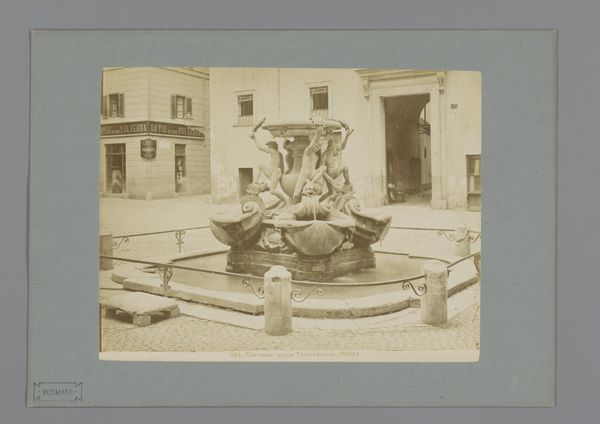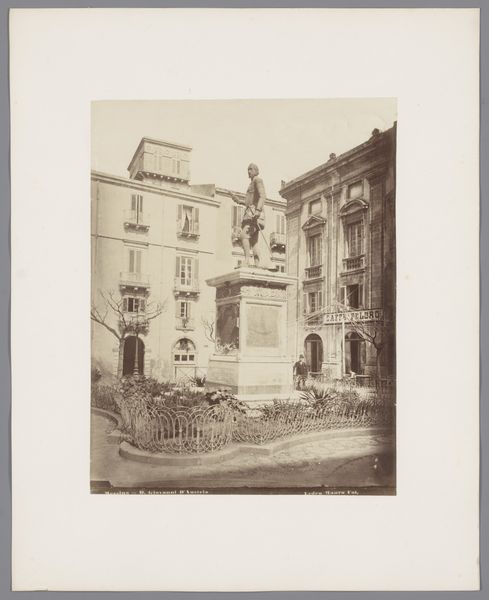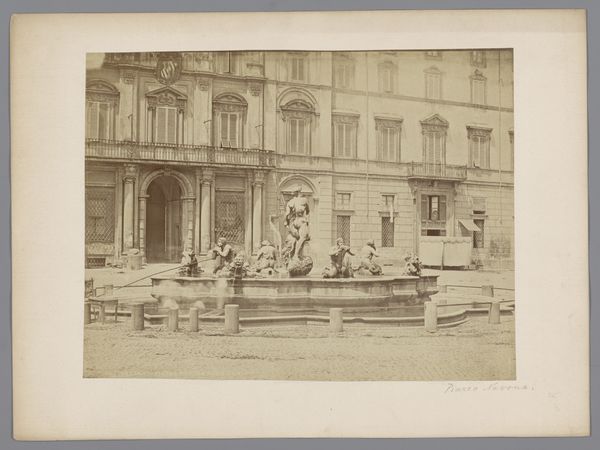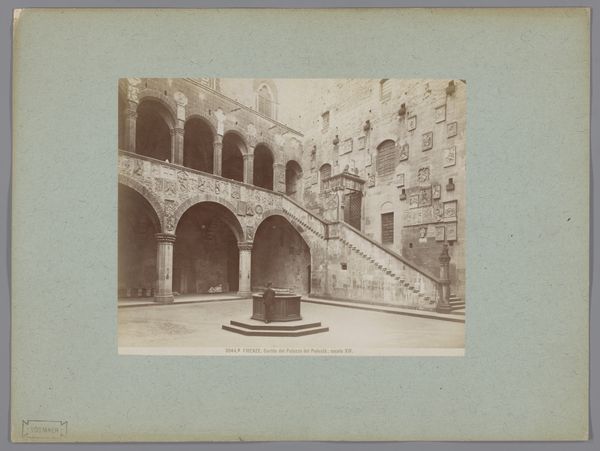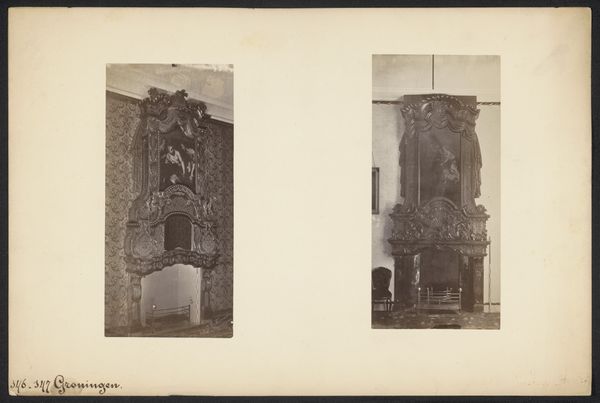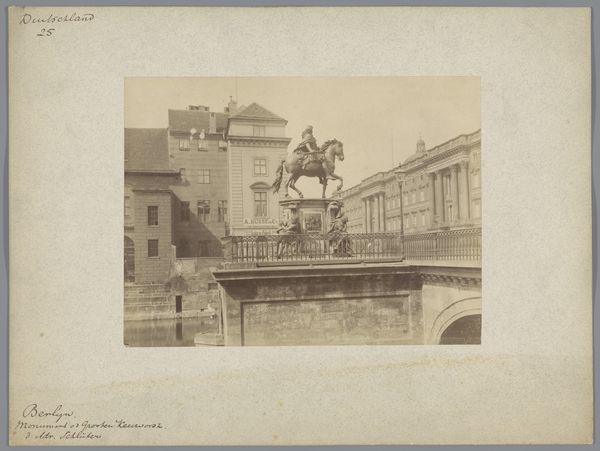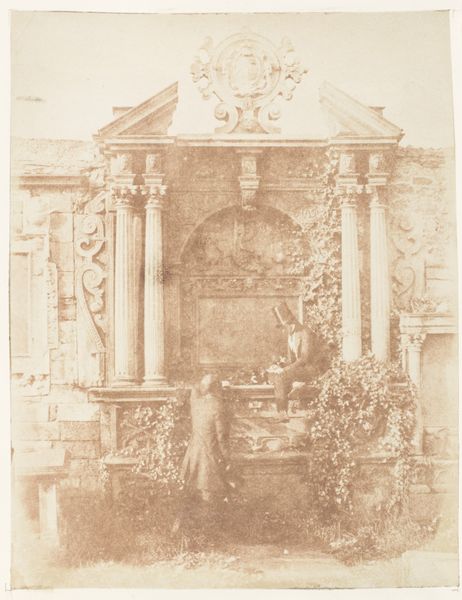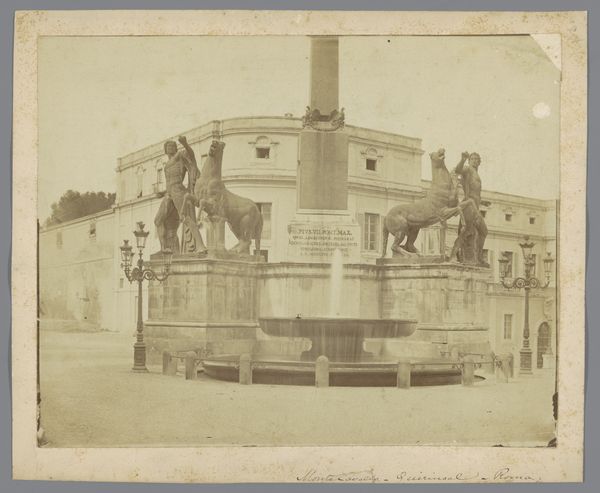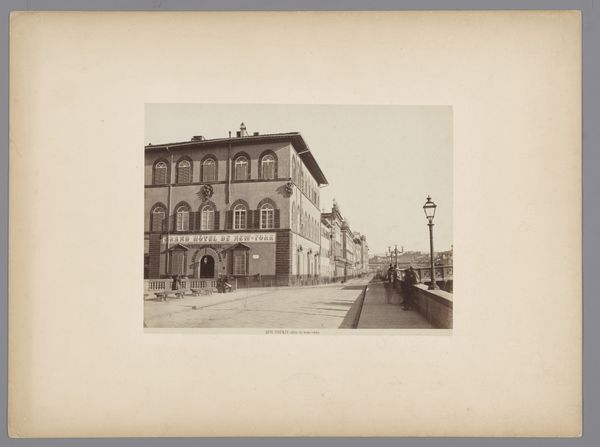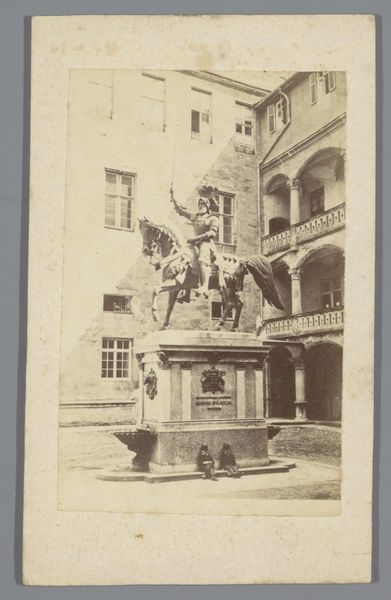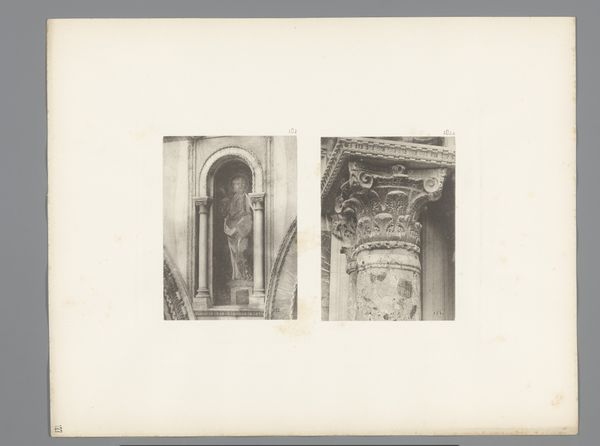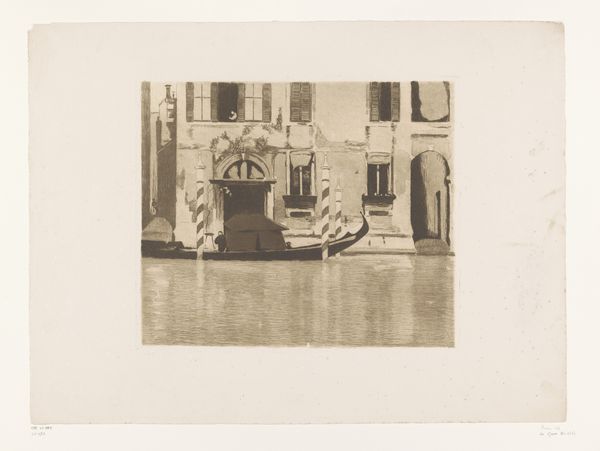
photography, gelatin-silver-print
#
aged paper
#
toned paper
#
light pencil work
#
pale palette
#
old engraving style
#
landscape
#
photography
#
personal sketchbook
#
gelatin-silver-print
#
cityscape
#
realism
Dimensions: height 225 mm, width 315 mm
Copyright: Rijks Museum: Open Domain
Editor: Here we have a gelatin-silver print titled "Gezicht op een fontein te Rome," placing it sometime between 1875 and 1900, by Gustave Eugène Chauffourier. The image quality makes it feel so distant and unreal, with its almost monochromatic tonality and visible paper grain. What strikes you about it? Curator: Well, immediately I consider the burgeoning tourist industry of the late 19th century. Rome, of course, held enormous symbolic weight, representing both the ancient empire and the seat of the Catholic Church. Photography, still relatively new, provided a means of capturing and disseminating images of power, of history, to a broader audience. Does that seem significant to you in the context of art distribution and accessibility? Editor: Absolutely. It's interesting to think of this photograph as a sort of souvenir, a mass-produced object meant to capture a personal experience of "being there." It sort of democratizes art viewership. But it also seems so… impersonal? Curator: Precisely! Think about the artistic conventions Chauffourier is engaging with – or perhaps subverting. The "vedute," or views, of Rome were a popular genre, but often meticulously crafted paintings. Here, photography offered a seemingly objective record. Yet, consider how the artist chooses his vantage point, the framing. Even the printing process adds a layer of artistic intervention. Is it truly objective? Does the muted palette affect the tone? Editor: I see what you mean! Even in attempting to document reality, there's inherent interpretation. The photographer’s decisions highlight certain aspects and frame the narrative. This makes you wonder what part of the scene he wants to highlight the most. Curator: And consider what the image represents: water, controlled and presented in a public space. Fountains were essential features of urban life, providing vital resources but also symbolizing civic pride and even imperial power. Think about how that reflects Rome's role within global politics. Editor: That completely reshapes my understanding of this image. It’s not just a picture; it's a carefully constructed narrative about Rome, its history, and its role on the world stage. Thank you for sharing your knowledge. Curator: My pleasure! It is fascinating to look at photography this way; analyzing the public role of photography in our modern society can tell us so much about socio-political power and history.
Comments
No comments
Be the first to comment and join the conversation on the ultimate creative platform.
